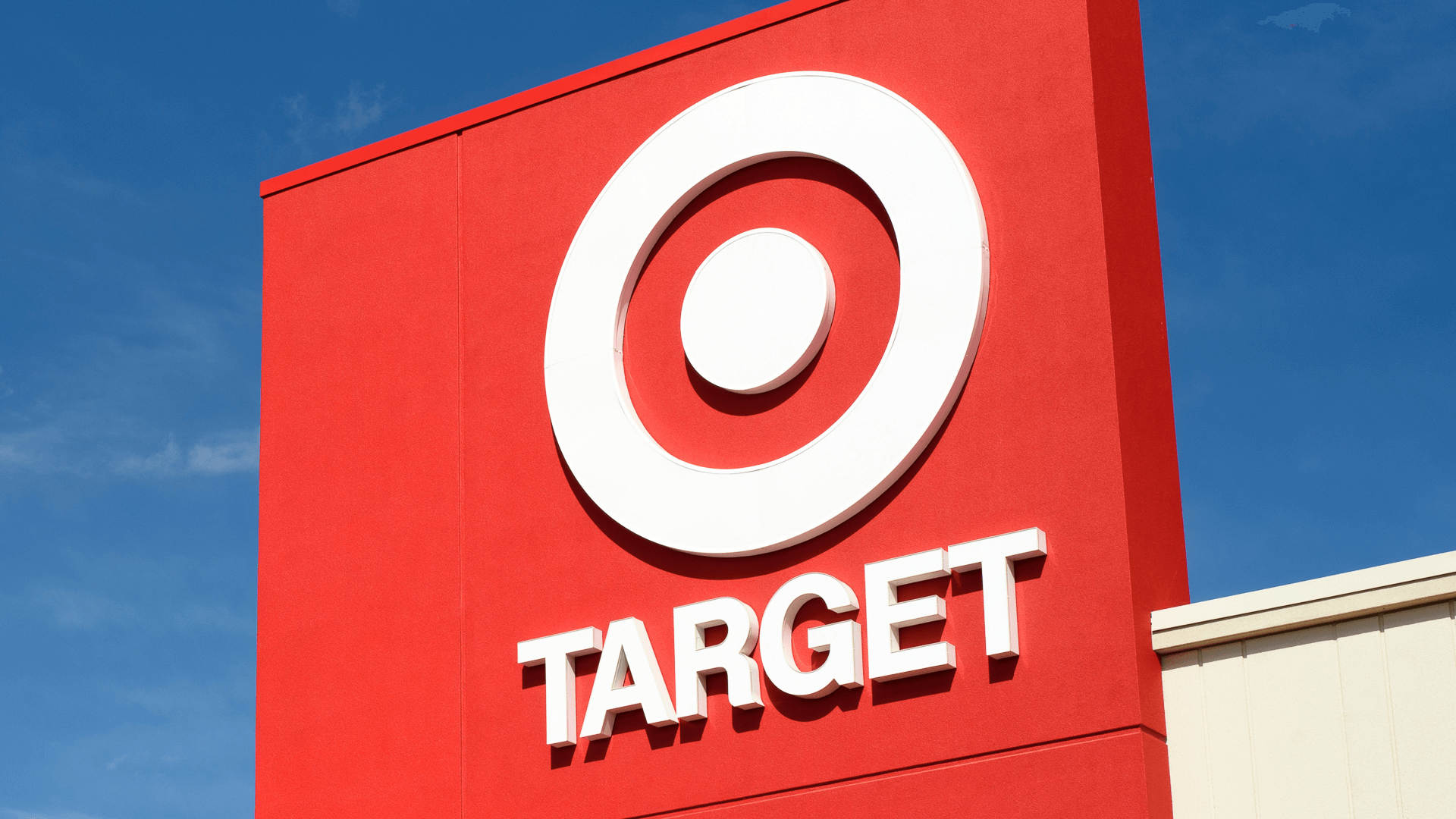Target Corporation is an American retail corporation headquartered in Minneapolis, Minnesota. It is the seventh largest retailer in the United States, and a component of the S&P 500 Index.
Target was established as the discount division of Dayton’s department store of Minneapolis in 1962. It began expanding the store nationwide in the 1980s (as part of the Dayton-Hudson Corporation), and introduced new store formats under the Target brand in the 1990s.
As of 2023, Target operates 1,948 stores throughout the United States, and is ranked No. 1 in the discount store category by Forbes. The company’s mission is to “inspire and empower guests to choose the right products and services to meet their needs every day.”
Target’s target market is middle-class families. The company offers a wide variety of merchandise, including apparel, home goods, electronics, and groceries. Target also offers a number of services, such as a pharmacy, a credit card, and a home delivery program.
Target is known for its innovative marketing campaigns and its focus on customer service. The company has been praised for its efforts to make shopping more convenient and enjoyable for its customers.
In recent years, Target has faced some challenges, including competition from online retailers and a data breach that affected millions of customers. However, the company has responded to these challenges by investing in its stores and its online presence.
Target is a major player in the retail industry and it is expected to continue to grow in the years to come. The company is well-positioned to succeed in the competitive retail landscape due to its strong brand, its focus on customer service, and its commitment to innovation.
Founding History of Target
Target Corporation, one of the largest retail chains in the United States, has a rich founding history that dates back to the early 20th century. The company’s roots can be traced back to 1902 when it was established as Dayton Dry Goods Company by George Draper Dayton in Minneapolis, Minnesota.
George D. Dayton initially acquired the struggling Goodfellow’s Dry Goods store and renamed it Dayton Dry Goods Company. Under his leadership, the store experienced steady growth and success. In 1911, Dayton’s son, Nelson Dayton, joined the business and played a significant role in its expansion.
In 1946, the company made a significant strategic move by opening its first suburban location called “The Target.” This new store format focused on offering discounted goods in a department store setting. The concept of providing high-quality products at affordable prices was a success, prompting the company to consider expanding this model further.

In 1962, the Dayton Company launched its first official Target store in Roseville, Minnesota. The new store featured a clean, modern design, and its merchandise was priced lower than traditional department stores. Target aimed to attract a broad customer base by offering a wide range of products, including apparel, household essentials, and home goods.
The introduction of the Target brand was a pivotal moment in the company’s history. The name “Target” was chosen to represent the store’s focus on providing customers with a specific, targeted shopping experience. The iconic red bullseye logo, still in use today, was also introduced at this time.
The success of the first Target store led to rapid expansion throughout the 1960s and 1970s. Target stores began popping up in various locations across the United States, offering customers a unique and affordable shopping experience. By 1979, the company changed its name to the Dayton-Hudson Corporation to reflect the increasing significance of the Target brand.
In subsequent years, Target continued its expansion and diversification efforts. The company acquired several regional retail chains, including Mervyn’s and Marshall Field’s, further solidifying its presence in the retail industry. These acquisitions allowed Target to reach new markets and expand its product offerings.
In 2000, the Dayton-Hudson Corporation underwent a rebranding and changed its name to Target Corporation to align with the growing prominence and recognition of the Target brand. The name change reflected the company’s commitment to its flagship retail chain and its vision for continued growth and success.
Today, Target Corporation operates over 1,900 stores across the United States and has established itself as a leading retail brand. With a focus on providing affordable, stylish products and exceptional customer experiences, Target continues to evolve and adapt to changing consumer demands in the ever-evolving retail landscape.
Business Segments of Target Corporation
Target Corporation operates through several distinct business segments, each catering to different consumer needs and contributing to the company’s overall success. These segments include:
Retail Stores: Target’s primary business segment is its network of retail stores. These stores offer a wide range of products, including apparel, home goods, electronics, beauty products, groceries, and more. Target stores are designed to provide a convenient and enjoyable shopping experience, with well-organized departments, attractive displays, and friendly customer service. The company operates stores in various formats, including Target stores, SuperTarget stores (which include a full grocery section), and small-format Target stores located in urban areas.
Online Sales: Target has significantly expanded its online presence in recent years. Through its e-commerce platform, target.com, customers can shop for products online and have them delivered to their doorstep. Target’s online sales segment has seen substantial growth, offering a wide selection of merchandise and leveraging the convenience of online shopping to cater to the evolving needs of consumers.
Target Brands and Exclusive Merchandise: Target has developed an extensive portfolio of private label brands and exclusive merchandise. These brands offer unique and high-quality products across various categories, including apparel, home goods, beauty, and food. Target’s private label brands, such as Goodfellow & Co., Cat & Jack, and Threshold, provide customers with exclusive and affordable options, helping differentiate Target’s offerings from its competitors.
Target Optical and Target Clinic: In addition to retail operations, Target also operates Target Optical centers and Target Clinic locations. Target Optical provides customers with eyeglasses, contact lenses, and vision care services. Target Clinic offers basic medical services such as vaccinations, minor illness treatment, and preventive care. These services provide added convenience to shoppers and contribute to Target’s commitment to holistic customer care.
Target Circle Loyalty Program: Target Circle is Target’s loyalty program, designed to reward customers for their loyalty and incentivize repeat purchases. Members of Target Circle can earn personalized offers, get early access to sales, enjoy discounts, and receive other exclusive benefits. This loyalty program helps drive customer engagement, fosters brand loyalty, and encourages repeat visits to Target stores or online shopping.
Each of these business segments plays a crucial role in Target’s overall operations and contributes to the company’s financial performance. By diversifying its offerings and embracing omnichannel retail strategies, Target aims to meet the evolving needs of consumers and remain a leader in the retail industry.
Target’s Approach to Retail, target market, and Unique Selling Proposition
Target Corporation has developed a distinct approach to retail that sets it apart from competitors. With a focus on creating an enjoyable and convenient shopping experience, Target caters to a wide range of customers, offering a mix of affordability, style, and quality. Let’s delve into Target’s approach to retail, its target market, and its unique selling propositions in more detail:
Approach to Retail
Target differentiates itself through its well-designed stores, attractive displays, and emphasis on customer experience. The company strives to create an inviting and engaging atmosphere, with wide aisles, organized departments, and visually appealing layouts. Target’s stores are known for their clean and modern aesthetic, providing a pleasant shopping environment for customers.
Target Market
Target aims to cater to a broad customer base, including individuals and families seeking affordable yet stylish products. While its offerings span multiple categories, Target focuses on household essentials, apparel, home goods, and electronics. The company positions itself as a destination for everyday needs, attracting customers looking for quality products at competitive prices.
Unique Selling Propositions:
a. Affordable Style: Target is renowned for its “cheap-chic” strategy, combining affordable pricing with stylish merchandise. The company collaborates with renowned designers and brands to offer exclusive collections that reflect current fashion trends. This approach enables customers to find fashionable items at accessible price points.
b. Diverse Product Range: Target provides a wide range of products, including clothing, accessories, furniture, home decor, electronics, groceries, and more. By offering a diverse assortment, Target aims to meet customers’ various needs and preferences, positioning itself as a one-stop shopping destination.
c. Exclusive Brands and Partnerships: Target has developed a robust portfolio of private label brands, such as Cat & Jack for kids’ clothing, Threshold for home goods, and Archer Farms for food products. These exclusive brands offer customers unique and high-quality options not found elsewhere, fostering brand loyalty and differentiation.
d. Inclusive Sizing and Diversity: Target has been proactive in promoting inclusivity by expanding its apparel sizing options and featuring diverse models in its marketing campaigns. This commitment to inclusivity resonates with customers seeking retailers that prioritize diversity and cater to a broader range of body types.
e. Target Circle Loyalty Program: Target offers a loyalty program called Target Circle, providing customers with personalized offers, discounts, and early access to sales. This program enhances the overall shopping experience, incentivizing customers to return to Target for their shopping needs.f.
f. Convenience and Digital Integration: Target has invested heavily in its digital capabilities and omnichannel strategy. It offers online shopping with various delivery options, including in-store pickup and same-day delivery. Additionally, Target has integrated its physical and digital channels, allowing customers to seamlessly switch between online and in-store experiences.
Target’s approach to retail, focus on its target market, and unique selling propositions have enabled it to carve out a distinctive position in the retail industry. By combining affordability, style, and convenience, Target has cultivated a loyal customer base and positioned itself as a preferred destination for shoppers seeking a diverse range of quality products.
Target Corporation financial performance
Target’s financials have been strong in recent years. In fiscal year 2022, the company generated $109 billion in revenue and $4.2 billion in net income. This represents a 10% increase in revenue and a 20% increase in net income from the previous year.
Target’s strong financial performance is due to a number of factors, including:
- A growing customer base: Target’s customer base has been growing in recent years, driven by the company’s expansion into new markets and its focus on providing a convenient and affordable shopping experience.
- A strong online presence: Target has a strong online presence, which has helped the company to reach new customers and to increase sales.
- A focus on innovation: Target is constantly innovating, which has helped the company to stay ahead of the competition. For example, Target was one of the first retailers to offer same-day delivery and buy online, pick up in store.
Target’s strong financial performance is a positive sign for the company’s future. The company is well-positioned to continue to grow and to succeed in the years to come.
Here is a more detailed look at Target’s financials over the past few years:
- Fiscal Year 2022: Revenue: $109 billion, Net Income: $4.2 billion
- Fiscal Year 2021: Revenue: $100 billion, Net Income: $3.5 billion
- Fiscal Year 2020: Revenue: $94 billion, Net Income: $2.9 billion
- Fiscal Year 2019: Revenue: $90 billion, Net Income: $2.7 billion
As you can see, Target’s revenue and net income have been growing steadily in recent years. This growth is a testament to the company’s strong business model and its focus on providing a great shopping experience for its customers.
Target Corporation Marketing Approach and Strategies
The marketing approach for Target involves a combination of strategies aimed at building brand awareness, driving customer engagement, and increasing sales. Here are the key elements of the marketing approach for Target:
Target Market Segmentation: Target Corporation identifies and segments its target market based on various factors such as demographics, psychographics, and behavioral patterns. This helps in understanding the needs, preferences, and shopping habits of different customer groups.
Brand Positioning: Target positions itself as a trendy, affordable, and stylish retail destination that offers a wide range of products for all ages. The brand focuses on providing a differentiated shopping experience compared to its competitors.
Product Assortment and Pricing: Target curates its product assortment to cater to the diverse preferences of its target market. The company offers a combination of owned brands and partnerships with renowned designers and brands to provide unique and exclusive products. Target maintains a balance between quality and affordability, offering competitive pricing strategies and regular discounts to attract price-conscious shoppers.
Integrated Marketing Communications: Target utilizes various communication channels to reach its target audience effectively. This includes traditional advertising mediums such as television, radio, and print, as well as digital channels like social media, email marketing, and targeted online advertisements. The messaging across these channels is consistent and reinforces the brand’s key attributes.
In-Store Experience: Target places a strong emphasis on creating an enjoyable and engaging in-store experience. This includes well-designed store layouts, visually appealing displays, and knowledgeable and friendly staff. Target stores often incorporate trendy and themed sections, such as the “dollar spot” or seasonal displays, to create a sense of discovery and excitement for shoppers.
Digital Presence and E-commerce: Recognizing the importance of online shopping, Target has invested heavily in its e-commerce platform. The company offers a user-friendly website and mobile app, enabling customers to browse and purchase products online. Target also provides options for in-store pickup, same-day delivery, and subscription services to enhance convenience for customers.
Customer Loyalty Programs: Target’s loyalty program, Target Circle, offers exclusive benefits, personalized discounts, and early access to sales for members. This program helps to foster customer loyalty and encourages repeat purchases. Target leverages data collected through the loyalty program to personalize marketing messages and offers to individual customers.
Community Engagement: Target actively engages with local communities through philanthropic initiatives, sponsorships, and partnerships. The company supports various charitable causes and promotes a sense of social responsibility, which resonates with many customers and enhances brand affinity.
Data-driven Marketing: Target leverages data and analytics to gain insights into customer behavior, preferences, and purchasing patterns. This data-driven approach allows Target to personalize marketing campaigns, recommend products, and optimize promotional strategies based on individual customer needs.
Continuous Evaluation and Adaptation: Target regularly evaluates the effectiveness of its marketing strategies through performance metrics, customer feedback, and market research. This enables the company to identify areas for improvement and adapt its marketing approach to changing market dynamics and customer demands.
By employing these key elements in their marketing approach, Target Corporation aims to build a strong brand image, drive customer engagement, and ultimately increase sales and market share.
Also Read: From Corner Store to Healthcare Giant: The Story of Walgreens
Growth Strategy of Target
Target Corporation employs several growth strategies to expand its business and maintain its position as a leading retail company. Here are some key elements of Target’s growth strategy:
Store Expansion and Remodeling: Target continues to open new stores in strategic locations to reach untapped markets and expand its customer base. The company conducts thorough market research to identify areas with high growth potential and tailors its store formats to meet the needs and preferences of local communities. Additionally, Target invests in remodeling existing stores to enhance the shopping experience and keep up with changing consumer trends.
E-commerce and Digital Expansion: Target recognizes the growing importance of e-commerce and digital channels in retail. The company has heavily invested in its online platform, improving website functionality, user experience, and mobile app capabilities. Target also offers various digital services such as same-day delivery, in-store pickup, and subscription options. This multi-channel approach allows Target to reach a broader customer base and adapt to the evolving retail landscape.
Private Label and Exclusive Brands: Target focuses on developing and expanding its private label and exclusive brands. These brands offer unique and differentiated products, allowing Target to maintain competitive pricing and margins. By expanding their portfolio of private label and exclusive brands across various categories, Target can provide customers with a wide selection of high-quality, affordable options that are not available in other stores.
Partnerships and Collaborations: Target forms strategic partnerships and collaborations with popular brands, designers, and influencers to create exclusive collections and products. These partnerships help Target attract new customers, generate buzz, and position itself as a trendy and fashionable retailer. Notable collaborations include partnerships with designers like Missoni, Lilly Pulitzer, and Hunter, as well as collaborations with popular brands like Disney and Starbucks.
Focus on Customer Experience: Target places a strong emphasis on providing an exceptional customer experience. This includes investing in well-designed stores, creating visually appealing displays, offering personalized services, and ensuring efficient and friendly customer service. Target also leverages data and technology to personalize marketing messages, promotions, and product recommendations, thereby enhancing the overall customer experience.
International Expansion: While Target primarily operates in the United States, the company has explored international expansion opportunities in the past. However, Target has taken a more cautious approach, focusing on establishing a strong domestic presence before pursuing significant international expansion. As of my knowledge cutoff in September 2021, Target had not made significant progress in expanding into international markets.
Data Analytics and Insights: Target utilizes data analytics and insights to understand customer behavior, preferences, and shopping patterns. By leveraging advanced analytics and machine learning algorithms, Target gains valuable insights that drive decision-making in various areas such as inventory management, pricing, and personalized marketing. This data-driven approach enables Target to optimize its operations and provide a more tailored and seamless shopping experience for customers.
Sustainability Initiatives: Target is committed to sustainability and has implemented various initiatives to reduce its environmental impact. The company aims to be a leader in sustainable retail by investing in renewable energy, reducing greenhouse gas emissions, and offering eco-friendly product options. These sustainability efforts not only align with customer values but also contribute to Target’s long-term growth and reputation.
Overall, Target’s growth strategy involves a combination of store expansion, digital expansion, product differentiation, customer-centric initiatives, and data-driven decision-making. By continuously adapting to changing consumer preferences and market dynamics, Target strives to drive growth, increase market share, and strengthen its position as a prominent retailer.
To read more content like this, subscribe to our newsletter



